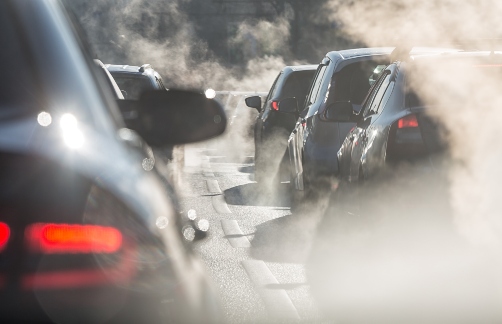Navigating urbanisation: a focus on better standards for indoor air quality
The World Health Organisation (WHO) estimates that outdoor and indoor air pollution contribute to millions of premature deaths annually. As we primarily live within indoor spaces, we become more susceptible to the invisible dangers of indoor air pollution. Homes, workplaces, and schools can harbour toxic pollutants from numerous sources, including cooking fumes and cleaning products to building materials used in construction that leech harmful fumes.
In a rapidly urbanising world, where more than half of the global population live in built-up areas, the benefits of city life often conflict with the challenges of close-quarter living. One of these challenges is the deteriorating quality of the air inside our buildings.
As urbanisation increases, built environment professionals should be aware of the relationship between urban living and indoor environmental quality. This article explores the consequences of urbanisation on indoor air quality and discusses how standards for indoor environmental quality, like the newly released British Standard BS 40102-1, can guide us towards healthier indoor spaces.
The impact of poor indoor environmental quality
The World Health Organisation (WHO) estimates that outdoor and indoor air pollution contribute to millions of premature deaths annually. As we primarily live within indoor spaces, we become more susceptible to the invisible dangers of indoor air pollution. Homes, workplaces, and schools can harbour toxic pollutants from numerous sources, including cooking fumes and cleaning products to building materials used in construction that leech harmful fumes.

Indoor air pollution can be a major health concern in unmanaged space, with chronic exposure leading to respiratory illness like asthma and allergies. Cognitive function, productivity and overall well-being can also suffer due to poor air quality. Vulnerable groups like the elderly and those with pre-existing health conditions are at even higher risk of these problems.
Public services bear the brunt of poor indoor environments. BRE has been researching and raising awareness of the link between poor housing and health for over 50 years. Our recent report shows that poor housing will cost the NHS and wider society over £135.5bn over the next 30 years without urgent action.
Balancing development and environmental concerns
As cities expand, the environment often pays the price with an increase in outdoor air pollution, fuelled by industrial activities, vehicle emissions and construction projects. Although the average person living in a developed country spends around 90% of their time indoors, the relationship between outdoor and indoor environments is frequently overlooked.
BRE has long contributed to the research into indoor environmental quality and provided expert guidance for how to minimise these impacts. We provided technical content and expertise on indoor air quality for Defra’s indoor air quality report, which focused on air pollutants in residential indoor environments.
Creating buildings that protect occupants’ health
The key to combating indoor air pollution lies in collaborative efforts from individuals, governments, and organisations. Strategies that align with the principles of both urbanisation and good indoor environmental quality (IEQ) include:
- Raising awareness: informing people about indoor air pollution sources and risks empowers them to make informed choices about their environments.
- Enhancing building regulations: stricter building codes can ensure the use of low-emission materials and efficient ventilation systems from the outset of construction projects.
- Improving ventilation: adequate ventilation is crucial. A combination of natural ventilation and mechanical systems can help circulate fresh air and expel pollutants.
- Embracing nature: incorporating indoor plants not only enhances aesthetics but also naturally purifies the air, absorbing pollutants and releasing oxygen.
- Limiting smoking: enforcing smoke-free policies indoors reduces harmful toxins and contributes to cleaner air for all.
BS 40102-1 IEQ: a path to better standards for indoor air quality
The BS 40102-1 IEQ is a new British standard on health and wellbeing, thermal comfort, indoor air quality and overheating in buildings. To enable built environment professionals to better understand the need for cleaner indoor environments, BRE Academy has worked with leading BRE experts in IEQ to develop an online course. This short, online module is a general guide to IEQ and its management and equips participants with a comprehensive understanding of indoor environmental quality, from air and thermal comfort, to lighting and soundscape quality. It also allows learners to recognise the importance of proper monitoring, maintenance and occupant feedback in fostering healthier indoor spaces.

Paving the way for a healthier urban future through BS 40102-1
As urbanisation increases, it’s important that we don’t neglect the quality of the air we breathe within our buildings. Through regulation and the adoption of practical measures, like following standards for indoor air quality, we can build progressive cities whilst prioritising the well-being of communities. Understanding the relationship between urbanisation and IEQ is our pathway to ensuring that the future cities we build are cleaner, healthier, and more sustainable for generations to come.
Find out more about BRE’s indoor environmental quality course.
